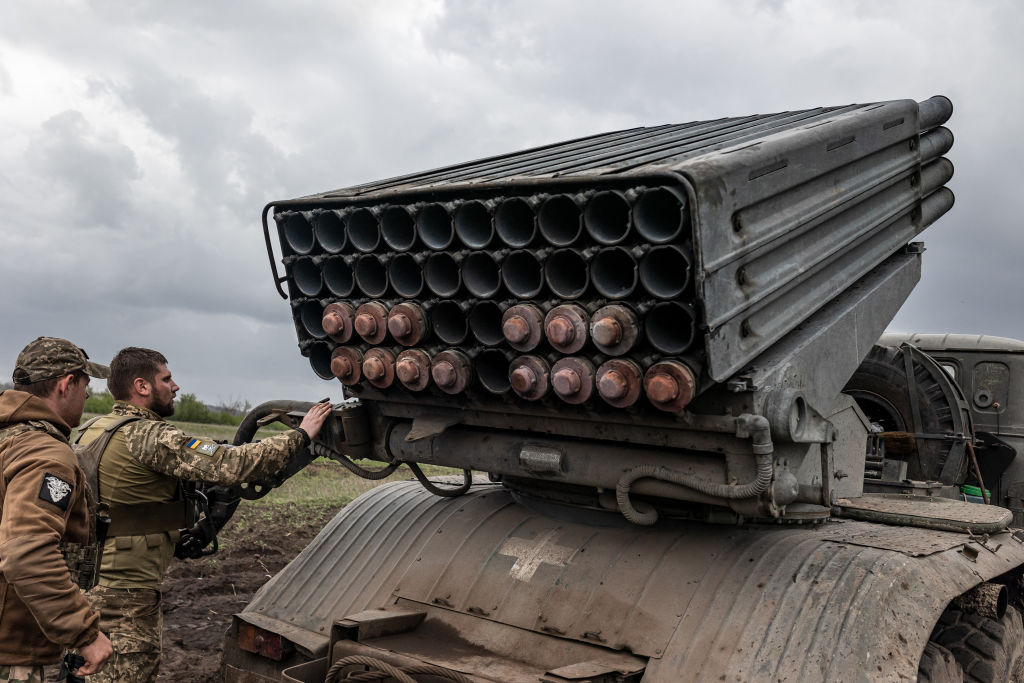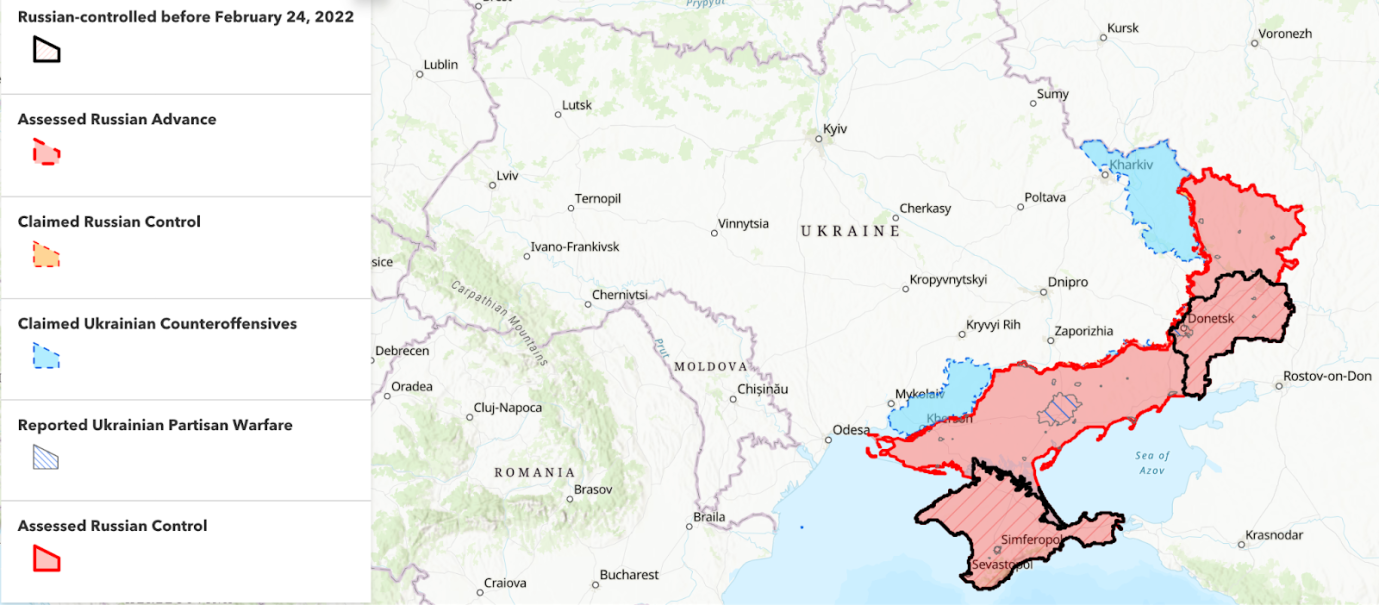Happy Monday! We haven’t read past the headline, but the Wall Street Journal published an article over the weekend encouraging readers to eat more bread. Don’t have to tell us twice!
Quick Hits: Today’s Top Stories
- The Sudanese military and rival paramilitary group Rapid Support Forces (RSF) agreed Sunday to a second 72-hour extension of a United States-brokered truce, though some fighting has continued throughout the agreed ceasefire as the conflict enters its third week. The U.S. executed its first overland civilian evacuation from Sudan on Friday, transporting 300 U.S. citizens to the Red Sea in a drone-monitored bus convoy. The State Department says about 5,000 Americans have signed up for security alerts, well below the 16,000 citizens originally estimated to be in the country.
- Republicans in the South Carolina and Nebraska legislatures shot down bills last week that would have restricted abortion access in each state. In South Carolina, six Republican state senators sunk a bill that would’ve banned abortion after conception with exceptions for rape, incest, and danger to the life of the mother. In Nebraska, one Republican legislator abstained from voting on a six-week abortion ban, tipping the vote against the bill. Abortion remains legal up to 20 weeks of pregnancy in Nebraska and 22 weeks in South Carolina.
- Supreme Court Justice Samuel Alito told the Wall Street Journal Friday he has a “pretty good idea” who leaked the draft Dobbs v. Jackson decision that ultimately overturned Roe v. Wade, claiming the leak was part of an effort to reverse the court’s decision. Alito noted the court’s marshal conducted an investigation into the breach, but said the suspect couldn’t be identified with “the level of proof that is needed to name somebody.”
- Democratic Colorado Gov. Jared Polis enacted four gun laws on Friday, raising the legal gun purchasing age from 18 to 21, instituting a three-day waiting period for gun purchases, and removing some lawsuit protections for gun and ammunition manufacturers. One of the new measures also expands the state’s “red flag” law, enabling teachers, medical professionals, and district attorneys to request a court order to temporarily seize a person’s guns if they are believed to pose a danger. Gun rights advocacy groups have already filed lawsuits contesting the constitutionality of the waiting period and age limit measures.
- Three U.S. troops died Thursday—and a fourth was hospitalized—after two Army helicopters collided during a training mission at Fort Wainwright in Alaska. The Army has not determined the cause of the crash, but announced a temporary ground stop of all flights—except those on critical missions—to allow aviators to attend an additional daylong training course over the next week. Last week’s crash was the second such accident in recent weeks; nine soldiers were killed on March 29 when two helicopters collided at Fort Campbell in Kentucky.
- The Bureau of Labor Statistics reported Friday that employer spending on wages and benefits—a closely watched indicator of inflation—increased 1.2 percent last quarter, a slight uptick from the 1.1 percent quarter-over-quarter increase in late 2022. The increase strengthens expectations that the Federal Reserve will announce another 25-basis-point interest rate hike later this week.
- President Joe Biden announced Friday he will commute the sentences of 31 nonviolent drug offenders who were serving out their sentences in home confinement. The move comes amid a broader criminal justice reform push from the administration, which has focused on expanding support services like affordable housing and employment programs for people reentering society after completing their sentences.
- Authorities in San Jacinto County, Texas, said Saturday a suspect who shot and killed five people Friday night—including an 8-year-old boy—is still at large. The local sheriff said the suspected shooter, 38, is likely still carrying his AR-15, which he was known to shoot in his yard. Officers have begun searching the wooded area around Cleveland, Texas—45 minutes northeast of Houston—by foot and with drones but said the suspect “could be anywhere.”
Any Day Now

Will Ukrainian forces wait for the summer sun to bake the spring mud dry—better for tracked armored vehicles—before launching their counteroffensive? Are they about to attack in the south, as suggested by a British-trained artillery unit stationed to bolster the lines in Zaporizhzhia? Or have they already begun, with probing attacks on Russian positions east of the Dnipro River in Kherson?
Wary of a ticking clock on Western support and eager to rescue citizens living under Russian occupation, Ukrainian leaders have for months been telegraphing plans for a spring counteroffensive. Despite the Pentagon leaker’s best efforts, we’re not sure where or when they plan to strike—which is just how military leaders like it—but attacking Ukrainian troops will face dwindling ammunition stocks and entrenched defenses, while Russian forces deal with supply and morale issues of their own.
Nobody’s giving details, but the Ukrainian push is starting to feel imminent. Ukrainian Defense Minister Oleksii Reznikov said Friday the country’s troops are “mostly ready” for the offensive and “preparations are being finalized.” In mid-March, Mykhailo Podolyak—an advisor to President Volodymyr Zelensky—told the Wall Street Journal the offensive was “one-and-a-half, two, two-and-a-half months away.”
Western officials overseeing the effort to equip Ukraine for the campaign also say they’re almost finished. NATO Secretary-General Jens Stoltenberg said last week Ukraine is in a “strong” position to retake occupied territory, reporting NATO members had delivered 98 percent of promised combat vehicles—including about 1,550 armored vehicles and 230 tanks—and “vast amounts of ammunition.” Gen. Christopher Cavoli—head of U.S. European Command—told Congress last week that Washington war-gamed with Kyiv to develop a list of equipment needed for a counteroffensive, and that most of it has arrived in Ukraine. “I am very confident that we have delivered the materiel that they need and will continue a pipeline to sustain their operations,” Cavoli said. He was clear, however, that “this war is far from over.”
Ukrainian leaders are motivated to push back Russian forces not only to free their citizens living under occupation, but also to move the frontline farther from civilians living within range of Russian strikes—a threatening drumbeat that has reshaped life in the country even for those who aren’t fighting. Ukrainians have shared photos of unexploded cruise missiles burrowed into the dirt next to playgrounds, and one Ukrainian newspaper now features sections labeled “Artillery” and “Tanks” alongside ones for “Gardening” and “Life Hacks.” Attacks on civilian electric grids have slowed, but the airstrikes continue. Russian bombers fired two dozen cruise missiles at Ukrainian cities last week—killing at least 25 civilians—in what the United Kingdom’s Ministry of Defense said may have been an attempt to target Ukrainian reserve units and newly supplied military equipment.
This map from the Institute for the Study of War shows the the battle lines:

There are also logistical reasons to move quickly, of course. As we reported a few weeks ago, Ukrainian forces have been burning through ammunition faster than the U.S. can manufacture it, even as both we and our allies step up production. The Pentagon leaks revealed U.S. officials in February estimated Ukraine’s air defense munitions could be depleted by the end of May, creating openings for attacks by Russian fighters and bombers. As the smaller nation—a population of some 43 million to Russia’s 146 million—Ukraine has less manpower to draw on, and the possibility of Western weapons dwindling is the constant shadow over its army’s shoulder. To shore up support from the U.S., Ukrainian leaders likely feel pressure to show proof of progress. Public opinion polls suggest support for Ukraine swells when Americans see stories of Ukrainian victories and Russian failures.
The longstanding morale problems within the Russian ranks haven’t gone anywhere, and have perhaps worsened in recent months. Amid reports of desertions, Russian commanders have begun issuing harsher punishments for soldiers drinking or trying to curtail their service contracts, while Russian President Vladimir Putin recently signed a bill authorizing an electronic draft system to make dodging conscription harder. High-level shakeups have continued as well: The deputy defense minister in charge of logistics—Mikhail Mizintsev, known as the “Butcher of Mariupol” for his role in overrunning that city—was abruptly replaced without explanation last week.
Nor is Russia free of its own supply-chain bottlenecks on military equipment. The Kremlin is still drawing on prewar stockpiles and buying supplies—such as drones from Iran—but sanctions have forced it to substitute foreign-made weapon components for lower-quality alternatives. And like Ukraine, Russia is ripping through ammunition supplies. Wagner Group head Yevgeny Prigozhin—who has previously complained about insufficient Kremlin support for his mercenary force—said Sunday his fighters are low on ammunition and may be forced to abandon the bloody effort to take Bakhmut. “Do we go on with our assaults or not?” he said in an interview with a Russian war blogger. He promised Wagner would stay “until the very last round of ammunition,” but warned his troops had days-worth of ammunition left, not weeks.
Then again, Prigozhin’s complaints may reflect frustration with insufficient Kremlin support rather than a real shortage—still significant, but not as pressing. While Ukrainian forces carefully target Russian installations to preserve ammunition, Ukrainian fighter Yurii Syrotiuk told national TV that Wagner troops seemed to have an “unlimited number of shells” and keep firing every few minutes—or even seconds. “They do not choose targets,” he said. “They just cover the squares,” he said.
If Ukrainian troops try to punch through Russian lines in the south as expected, they’ll run into defenses Russian forces have been building for months. In November, Britain’s Defense Ministry said two Russian factories had begun churning out concrete “dragons’ teeth” tank barriers, and satellite images show miles of anti-tank ditches and trenches. According to a Reuters analysis, “Russia’s positions are most concentrated near the front lines in the south-eastern Zaporizhzhia region, in the east and across the narrow strip of land connecting the Crimean Peninsula to the rest of Ukraine.” Sergey Aksyonov, a Russia-appointed official in the occupied Crimean peninsula, bragged Russian forces had “built a modern, deeply-echeloned defense.”
Those defenses will be far less effective if manned by green conscripts or commanded by an ever-shifting cast of incompetent Kremlin military leaders. But unless Russian forces and leaders panic and collapse, entrenched fighters could still keep Ukrainian troops from replicating the territorial gains of their lightning Kharkiv offensive in September—instead bogging them down in town-by-town fighting. “It will not be easy for Ukrainian forces to avoid the war’s character as one of attrition, even if they are large, well-prepared, and well-equipped,” argued military analyst Franz-Stefan Gady. “In the long run, Ukraine’s armed forces will have a tough time escaping the crucible of attrition of this artillery-focused land war.”
Worth Your Time
- A Politico reporter who had never used Tik Tok got on the platform with one goal: to spend an entire day consuming exclusively political content on the Chinese-owned video app, where about 10 percent of U.S. adults get their news. “Organizers on both sides of the aisle are laser-focused on using it as a tool to reach voters,” writes Derek Robertson. “So as the app balloons in popularity (and becomes a news story in its own right), that makes it no trivial matter what its news media landscape actually looks like. And for someone far more used to Twitter’s to-the-nanosecond, deeply-in-the-weeds presentation of the news, TikTok looks utterly bewildering. This was 8:01 a.m. on Monday, April 17. TikTok obligingly served up a brief digest of global news stories titled ‘Today’s World News’… dated the preceding Thursday, April 13. Even more than being stale, it just felt disorienting. The overall effect is to create a digital space that feels decidedly outside the ‘moment’ as you might have come to understand it. TikTok exists in its own eternal ‘moment,’ slightly adjacent to the news. What’s served up there isn’t necessarily what’s happening now, but what it senses you’re looking for now. By the end of the day the app doggedly learned what makes me tick. Not ‘me’ the reporter, but me the person.”
- Writing for the New York Times, Mike Baker recounts how Craig Coyner, at one time the mayor of Bend, Oregon, became homeless and ultimately lost his life in the city he helped lead. “Mr. Coyner had been pulled through a vortex of the same crises that were churning through many boom towns across the West: untreated mental illness, widespread addiction, soaring housing costs and a waning sense of community,” Baker writes. “After a life spent as a pillar of Bend’s civic life, Mr. Coyner had somehow reached a point of near total destitution, surrounded by the prosperity he had helped create.”
Presented Without Comment
NBC News: Dutch Court Bans Sperm Donor Who Fathered at Least 550 Children
“A Dutch court on Friday banned a man from donating any more of his sperm after he fathered at least 550 children in the Netherlands and other countries and misled prospective parents about the number of offspring he helped to conceive. … Under Dutch guidelines, sperm donors are allowed to produce a maximum of 25 children with 12 mothers.”
Toeing the Company Line
- In the newsletters: Chris examines (🔒) the patriotic themes present in Biden’s early reelection efforts, Nick argues Biden (🔒) is no shoo-in for a second term, and Jonah tackles Tucker Carlson’s tenuous relationship with the truth.
- On the podcasts: Jonah offers a mea culpa on his punditry misses, and Mike talks with lobbyist Liam Donovan about House Speaker Kevin McCarthy’s debt ceiling battle.
- On the site over the weekend: Alec praises the second season of the Keegan-Michael Key and Cecily Strong vehicle, Schmigadoon!
- On the site today: Drucker and Audrey report on private concerns among Democrats about Biden’s age, Audrey explains what would happen if a party’s presidential nominee had to withdraw his or her candidacy, and Chris asks whether GOP candidates should accept a Trump nomination but hope for a Trump defeat: “If there’s a bull in your china shop, are you better off to let him roam at will than perhaps doing greater harm trying to chase him out?”
Let Us Know
How—if at all—does the Ukrainian military’s success or failure in the war affect your opinion on whether the United States should continue sending money and weapons to Kyiv?











Please note that we at The Dispatch hold ourselves, our work, and our commenters to a higher standard than other places on the internet. We welcome comments that foster genuine debate or discussion—including comments critical of us or our work—but responses that include ad hominem attacks on fellow Dispatch members or are intended to stoke fear and anger may be moderated.